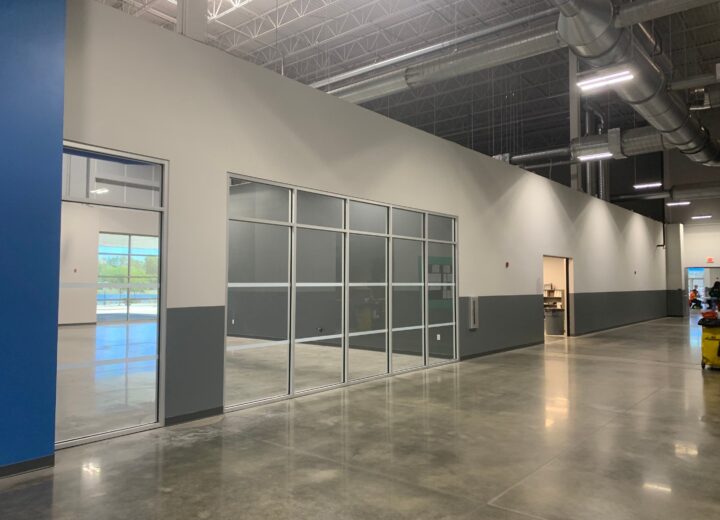 As people age, the immune system becomes less responsive. People don’t become sick from every harmful bacteria or virus they are exposed to, but elders with weakened immune systems face elevated risks. Disorders that compromise the immune system also become more likely with age. This can turn relatively mild infections into threats.
As people age, the immune system becomes less responsive. People don’t become sick from every harmful bacteria or virus they are exposed to, but elders with weakened immune systems face elevated risks. Disorders that compromise the immune system also become more likely with age. This can turn relatively mild infections into threats.
The problem is compounded by the long periods of time elders are likely to spend indoors. It is often easier to get sick indoors than outside. Outdoors, the natural flow of air can disrupt many viruses and bacteria, making it less likely someone is exposed enough to become ill. Indoors, pathogens like these can become trapped in the ventilation system.
Sick building syndrome is just one example of a situation where indoor air quality impacts people in a negative way. Employees and visitors to a building can experience symptoms that last only as long as they are within that space. When sick building syndrome impacts a residential space, like an apartment or senior living facility, it can have far-reaching health consequences.
How leaders manage indoor spaces matters – especially for the elderly.
That’s why more senior living centers are using microbicidal coatings. Advanced microbicidal paints and primers can significantly lessen the load of pathogens in a space. They make surfaces, including walls, doors, and countertops, actively hostile to common bacteria.
Microbicidal Coatings Make Senior Living Facilities Safer
Senior living facilities have been moving toward a blended environment where care meets an active lifestyle. That enriches residents’ lives but creates more opportunities for infection.
Microbicidal coatings provide an extra level of protection. Microbicidal paints can be used on a wide variety of surfaces that might otherwise contribute to infection rates in a facility.
A microbicidal coating is one that not only inhibits but actively destroys particular pathogens that come in contact with the treated substrate. Sherwin-Williams’ Paint Shield is the leading microbicidal coating, although other brands have entries in production.
Paint Shield can safeguard against several common pathogens, including:
- Staph
- MRSA
- E. coli
- VRE
- Enterobacter aerogenes
Paint Shield had to pass extremely strict laboratory testing before it could be marketed as a true microbicidal coating. Test after test demonstrated its performance results: Destroying up to 99.9% of the target bacteria that comes into contact with the treated surface.
The 99.9% figure is measurable within two hours of contact with the surface. Paint Shield can remain effective for years without additional application as long as the integrity of the surface is maintained. Of course, coatings should be reapplied as part of your ongoing maintenance.
Since Paint Shield reached the market in 2015, thousands of senior care facilities all throughout the United States have used it. That includes the full range of facilities from independent living developments to advanced care facilities that help residents manage chronic diseases of age.
Microbicidal Coatings Protect Residents and Employees from Human Error
Senior living facilities should be staffed by highly trained experts who understand elders’ needs. Unfortunately, day to day challenges can put older people at risk of infection in spite of careful sanitation protocols and other measures.
Many Americans recently learned that it can be hard to avoid scratching your nose or touching your mouth if you are not thinking about it. In the same way, it only takes one incautious gesture, a few seconds long, to potentially expose an elder to a pathogen.
Staph and E. coli are two of the most common environmental pathogens passed on during food service. MRSA and VRE, on the other hand, are both notable for being resistant to antibiotics.
To control the spread of infection, Paint Shield can be applied in many locations:
1. Food Preparation Areas
On-site food preparation is a high-risk area for infection. Staph and E. coli are common causes of food poisoning. E. coli can cause an infection with diarrhea, vomiting, and other symptoms from a very small amount of bacteria. Microbicidal coatings make it easier to keep these spaces clean.
2. Medical Storage Locations
Many facilities provide medication management as a basic part of the resident experience. Areas must be refrigerated according to the requirements of each medication and kept clean at all times. Using microbicidal coatings on counters, walls, and doors helps prevent cross-contamination.
3. Staff Break Areas
Staff members in care facilities need “off stage” areas where they can rest. These places allow them to relax, take lunch breaks, and prepare for their duties in the rest of the day. Microbicidal paint is a good adjunct to the policies and procedures that keep this more casual atmosphere safe.
Each mitigating step taken by staff members compounds to reduce the likelihood of infection. However, time and attention are both limited. Microbicidal coatings represent the most powerful “passive” measure that senior living facilities can take to defend health of residents and staff.






